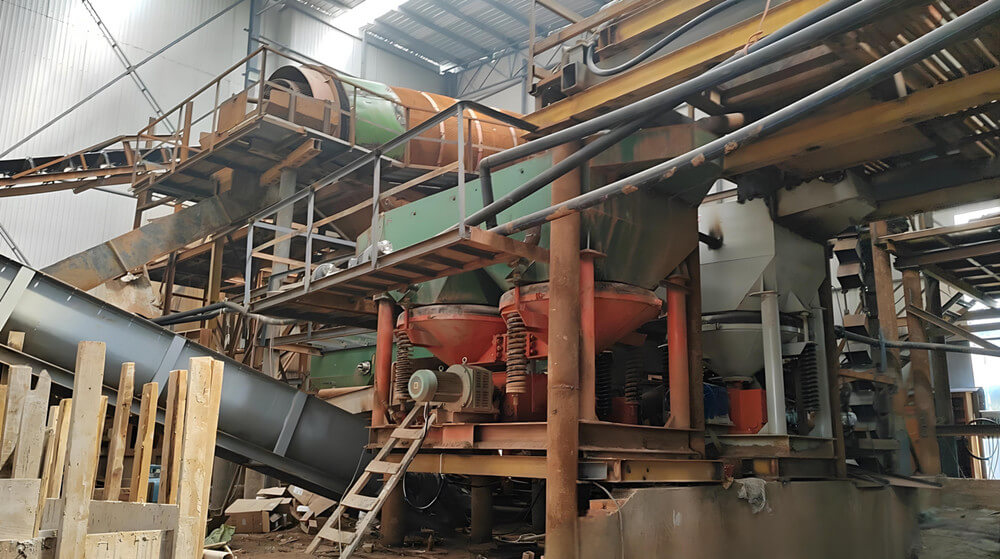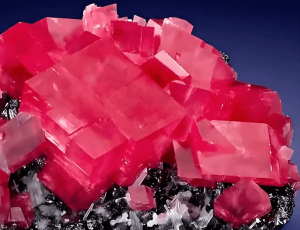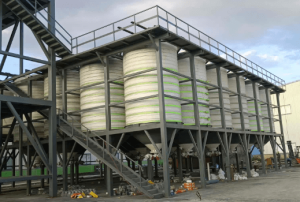Tin has been a critical metal in various industries, and understanding the different types of tin deposits is essential for efficient extraction and processing. There are primarily two types of tin deposits: alluvial tin and lode tin. Alluvial tin deposits are typically formed through the weathering of tin-rich rocks, leading to the concentration of tin minerals in riverbeds, floodplains, and marine sediments. In contrast, lode tin deposits are associated with hard rock formations where tin-bearing minerals are embedded within the geological matrix. This article will delve into the methods used in tin mining and ore dressing, highlighting the mining strategies and recovery methods.
Alluvial Tin and Lode Tin Deposits
The tin ore can be mainly divided into two categories: alluvial deposits and lode deposits. These two types of ore bodies have unique characteristics regarding their formation mechanisms, mining methods, and economic values. Below is a detailed introduction to both types of tin ore.
Alluvial Deposits
Formation: Alluvial tin deposits are primarily formed through weathering, erosion, and transportation processes, usually found in sedimentary environments such as rivers, lakes, and oceans. This type of deposit often consists of tin minerals (such as cassiterite, SnO2) accumulated in surface or near-surface sediments.
Characteristics:
- Easier to mine, typically using open-pit mining methods.
- Due to their widespread distribution, they can usually be extracted using simple sorting and washing techniques.
- Generally have higher grades, resulting in significant economic benefits.
Main Distribution Areas: Commonly found in Southeast Asian countries, such as Malaysia and Indonesia, as well as some African nations.
Lode Deposits
Formation: Lode tin ores are typically formed through hydrothermal activities during tectonic movements, with tin minerals precipitating in rock fractures. These deposits are often located in igneous or metamorphic rocks.
Characteristics:
- More challenging to mine, usually requiring underground mining.
- The grade of lode deposits may not be as high as alluvial deposits, but due to their formation process, the mineral bodies are often concentrated, making them potentially very rich when mined.
- Deep resource extraction requires advanced technology and equipment, resulting in higher investment costs.
Main Distribution Areas: Typical examples include regions in Yunnan and Guizhou in China, as well as Mexico and Bolivia.
Both alluvial and lode tin deposits are driven by market demand primarily from the electronics industry, soldering materials, and alloys. Fluctuations in demand can impact the mining strategies and investment decisions for tin ore. Understanding the characteristics of these two types of deposits is crucial when planning mining operations and market strategies.
In the development and utilization of tin ore resources, both alluvial and lode deposits have their advantages and challenges. Enterprises need to formulate suitable mining methods based on market conditions, technical capabilities, and resource characteristics to maximize economic returns.
Tin Mining
There are several main mining methods for tin ore, and the specific choice depends on the type of ore deposit (such as alluvial ore and rock ore), its geographical environment, economic factors, and other factors.
Alluvial tin mining
Alluvial tin ore mainly exists in river or water flow sedimentary environment, and the following methods are usually used:
Hydraulic mining
Principle: Use high-pressure water jets to wash loose ore into the ore washing equipment.
Equipment: Water pump, high-pressure nozzle, ore washing tank.
Advantages: High efficiency and suitable for large-scale mining.
Mechanical excavation
Principle: Use heavy machinery such as excavators to directly excavate open-pit mines.
Advantages: Suitable for surface sedimentary layers, relatively low cost.
Mine mining
Underground mining
Application: Mainly used for rock ores (such as tin veins), suitable for areas where the ore body is deeply buried or the mining cost is high.
Method:
- Longwall mining: Mining along the horizontal plane of the ore body, suitable for large-scale mining.
- Room-pillar mining: Retain some ore pillars to support the lining roof, suitable for uneven ore bodies.
Open pit mining
Principle: By digging shallow surface ore, large-scale surface mining is carried out using large machinery.
Advantages: Low cost, high equipment utilization, suitable for shallow ore bodies.
Regardless of the mining method used, environmental protection measures are crucial to prevent pollution of water, soil, and air during mining and ensure sustainable development.
There are many different methods for mining tin ore. Reasonable selection and application based on the characteristics of the ore deposit can not only maximize resource recovery, but also improve economic benefits. Developing more efficient and environmentally friendly mining and beneficiation technologies is an important direction for the future tin mining industry.
Tin Ore Dressing
After tin ore is mined, it is usually necessary to go through mineral separation to extract tin metal. Common methods include:
- Gravity separation: separation based on the density difference of minerals, especially suitable for the extraction of heavy minerals in tin ore.
- Flotation: suitable for the treatment of complex minerals (such as stannite), which can effectively separate tin minerals and impurities.
- Magnetic separation: In some tin ores, if there are magnetic minerals, magnetic separation technology can be used for separation.
The following is a detailed description of each mineral separation method

1. Gravity Separation
Principle: Utilizes the density differences between minerals to separate tin minerals (such as cassiterite) from associated minerals through gravitational separation.
Operation:
- Common equipment includes jigs, spiral classifiers, and shaking tables.
- The ore is crushed, and then water flow is used to concentrate heavy minerals, improving tin recovery rates.
Advantages:
- High efficiency, straightforward process, and easy to operate.
- Particularly effective for the recovery of tin minerals.
2. Flotation
Principle: Takes advantage of the differences in hydrophobicity and hydrophilicity between tin minerals and other minerals by adding flotation reagents, allowing tin minerals to attach to bubbles and be separated.
Operation:
- The mineral slurry is passed through flotation machines, where gas bubbles are introduced, collecting tin minerals in the froth.
- Flotation reagents (such as collectors and depressants) can be selected based on the composition of the ore.
Advantages:
- Effective for dealing with complex ores and associated minerals.
- Can achieve high tin grades.
3. Magnetic Separation
Principle: Separates magnetic minerals from non-magnetic minerals based on their magnetic properties.
Application: Typically used for tin ore deposits containing certain magnetic minerals (like iron ore).
Advantages:
- Can be used alone or in conjunction with gravity and flotation methods to improve overall separation efficiency.
- The treatment process is relatively simple.
4. Chemical Methods
Principle: Converts tin elements in tin ore into soluble compounds through chemical reactions, allowing for subsequent metal recovery.
Application: In specific cases (e.g., when tin content in ores is low), chemical methods can serve as a supplementary beneficiation technique.
Advantages:
- Can extract high-purity tin metal and show significant effectiveness for complex ores.
5. Combined Beneficiation Methods
Principle: Integrates multiple methods to optimize processes and improve tin recovery rates.
Application: For ores containing rich associated minerals, a combination of gravity, flotation, and magnetic separation methods is employed.
Advantages:
- Improves resource utilization and enhances adaptability.
- Allows for higher recovery rates at lower costs when treating complex ores.
The selection of tin ore beneficiation methods should consider ore properties, mineral composition, grades, and economic factors. In practice, multiple methods are typically combined for optimal tin recovery efficiency. Additionally, prioritizing environmental protection and sustainable resource development is crucial in modern beneficiation processes.
Conclusion
In conclusion, the mining and dressing of tin ores are pivotal for meeting global demand for this versatile metal. Both alluvial and lode tin deposits present unique challenges and opportunities for miners and industry stakeholders. As technologies advance, the methods of tin ore dressing continue to evolve, leading to more efficient and environmentally responsible practices. The sustainable management of tin resources is crucial not only for economic growth but also for preserving natural ecosystems. With proper innovation and commitment to sustainability, the future of tin mining can thrive while contributing to the global push for greener practices and resource conservation.



